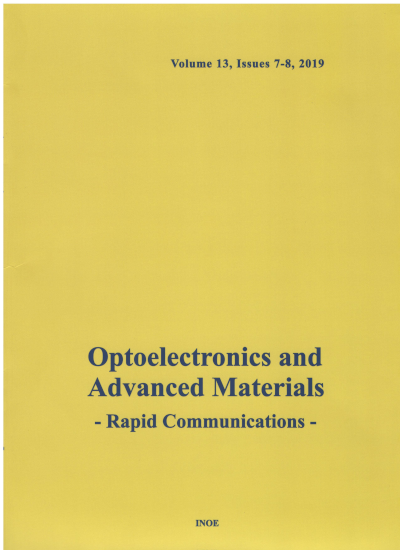Abstract
This study has investigated SPR sensors using plasmonic bimetal, varying the combination of Au-Ag thickness to obtain
good sensitivity. In this case, heavy metal analytes are used to test the sensitivity obtained. Simulation and analysis
methods were carried out in depth to test the configuration capabilities of each plasmonic bimetal. Although the single Au
configuration showed better stability, the Ag characteristics outperformed it in terms of sensitivity. Thus, to obtain optimum
sensitivity, the thickness of each plasmonic bimetal was varied with a total thickness remaining at 50 nm. The analysis
results show that at thickness variations of 10Au-40Ag nm, the minimum transmittance (Tspr) is almost zero. Meanwhile, the
thickness variations of 20Au-30Ag nm, 25Au-25Ag nm and 40Au-10Ag nm still have Tspr values in the range of 0.2-0.4 nm.
Other analysis results show that the thicker the Ag material in the bimetal combination, the narrower the FWHM value of the
resulting deep resonance spectrum tends to be. In the variations of heavy metal analytes used such as Cu, Pb, Hg, Zn, Fe
and Co, the sensor quality parameters did not show the same trend for each analyte. Overall, the research methodology
conducted shows that plasmonic bimetal variations can improve sensor quality parameters for several heavy metal
analytes.
Keywords
SPR sensors, FDTD, Sensitivity, Au-Ag thickness dependent, Heavy metals.
Citation
L. D. MAULUDI, R. A. FIRDAUS, M. YANTIDEWI, W. P. TRESNA, A. KHUMAENI, Performance of Au-Ag thin film thickness on Surface Plasmon Resonance sensor for heavy metals detection, Optoelectronics and Advanced Materials - Rapid Communications, 19, 3-4, March-April 2025, pp.136-141 (2025).
Submitted at: Aug. 12, 2024
Accepted at: April 3, 2025
